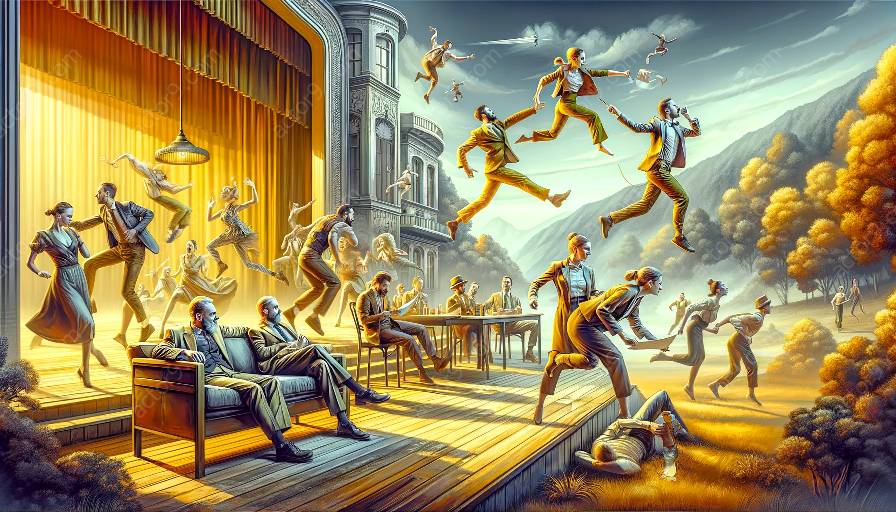Improvisation plays a crucial role in comedic physical theatre performances, intertwining with the comedic aspects of physical theatre to create unique and engaging experiences for audiences. Through spontaneity and creativity, performers bring humor to life on stage, captivating spectators with their ability to think on their feet and deliver laughter-inducing moments that are genuine and unscripted.
Understanding Comedic Aspects of Physical Theatre
Before delving into the role of improvisation, it is essential to grasp the comedic aspects of physical theatre. Physical comedy has a rich history and has been a vital part of theatrical performances for centuries. It encompasses a wide range of techniques and styles, including slapstick, clowning, mime, and more. The physicality of comedic performances often takes center stage, relying on exaggerated movements, facial expressions, and gestures to convey humor without the need for extensive dialogue.
Moreover, comedic physical theatre goes beyond traditional comedy by incorporating elements of surprise, absurdity, and satire into live performances. It aims to elicit genuine laughter from the audience, engaging them through kinetic and visual humor that transcends language barriers.
The Integration of Improvisation
Improvisation serves as a fundamental component that breathes life into comedic physical theatre. In this context, improvisation refers to the spontaneous creation of content, dialogue, and actions by performers in real time, often without a predetermined script. This element of unpredictability adds an extra layer of excitement and engagement to the comedic aspects of physical theatre, allowing performers to react instinctively to their environment, fellow actors, and audience responses.
The role of improvisation in comedic physical theatre performances extends beyond simply generating spontaneous jokes. It empowers performers to explore physical humor in unexpected and unscripted ways, leading to surprising and memorable moments that arise organically from the interaction between the performers and their comedic environment.
Key Significance of Improvisation
One of the key significances of improvisation in comedic physical theatre is its ability to keep each performance fresh and dynamic. By embracing improvisation, performers avoid falling into a scripted routine, allowing them to adapt to the unique energy of each audience and venue. This adaptability contributes to the creation of a vibrant and interactive experience that keeps audiences thoroughly engaged and entertained.
Furthermore, improvisation fosters a sense of shared experience between the performers and the audience. When comedic moments are spontaneously created on stage, the audience becomes an active participant in the unfolding humor, resulting in a delightful sense of communal enjoyment and connection.
The Creative Process and Spontaneity
Every comedic physical theatre performance that incorporates improvisation undergoes a creative process that thrives on spontaneity. Rehearsals and workshops lay the groundwork for performers to hone their improvisational skills, fostering a deep understanding of comedic timing, physical communication, and the art of responding in the moment.
This creative process allows performers to cultivate a repertoire of comedic techniques and physical expressions that can be seamlessly interwoven with spontaneous moments during live performances. The balance between rehearsed elements and unscripted improvisation adds depth and unpredictability to each show, creating an atmosphere of delightful uncertainty for both performers and audience.
Conclusion
In conclusion, the role of improvisation in comedic physical theatre performances is paramount in shaping memorable and captivating experiences. It acts as a catalyst that elevates the comedic aspects of physical theatre, infusing performances with authenticity and dynamism. Through improvisation, performers unleash their creativity and spontaneity, inviting audiences on a joyous and unpredictable journey filled with laughter and shared moments of light-hearted exhilaration.




































